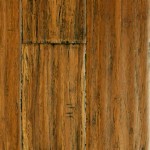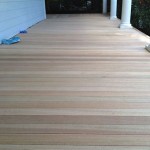Can You Whitewash Wood Floors Without Sanding?
Whitewashing wood floors offers an appealing aesthetic, lending a light, airy, and often rustic feel to interiors. The process typically involves applying a diluted white paint or specialized whitewash product to the wood surface. However, the traditional method frequently includes sanding as a crucial preparatory step. This raises the question: Is it possible to achieve a satisfactory whitewashed effect on wood floors without the laborious process of sanding?
The answer is nuanced and depends heavily on the existing condition of the floor, the type of finish currently applied, and the desired final look. While sanding is generally recommended for optimal adhesion and a uniform finish, alternative methods exist that can bypass this step under specific circumstances. These methods involve careful preparation, product selection, and application techniques designed to promote bonding and achieve the desired level of opacity and visual appeal.
Skipping the sanding process entirely is not always advisable. The existing finish on the floor acts as a barrier, potentially preventing the whitewash from properly penetrating the wood grain. This can result in a finish that is prone to peeling, chipping, or an uneven appearance. However, for floors with minimal existing finish, or when a heavily distressed, rustic look is desired, the no-sanding approach can sometimes be successful. Careful consideration must be given to each factor before proceeding.
Assessing the Existing Floor Condition
Before attempting to whitewash wood floors without sanding, a thorough assessment of their current condition is paramount. This involves examining the existing finish for any signs of damage, wear, or contamination. Any loose coatings, dirt, grease, or other debris must be removed to ensure proper adhesion of the whitewash product. A floor that is heavily worn, deeply scratched, or has multiple layers of aged finish is generally not a good candidate for a no-sanding whitewashing project.
The type of existing finish also plays a crucial role in determining the feasibility of forgoing sanding. Floors finished with oil-based polyurethane are often more challenging to whitewash without sanding compared to those finished with water-based products. Oil-based finishes create a denser, more impermeable barrier that is difficult for most whitewash products to penetrate. Waxed floors also present a unique challenge, as wax can repel water-based whitewashes. Thorough cleaning and degreasing are essential in such cases to remove as much wax residue as possible.
Furthermore, it is important to identify and address any underlying issues, such as water damage, mold, or wood rot, before proceeding with any type of refinishing project. These problems must be rectified to ensure the longevity and structural integrity of the floor. Ignoring these issues can lead to more significant problems down the line and compromise the final result of the whitewashing process.
A simple test can be performed to assess the adhesion of the existing finish. Apply a piece of painter’s tape to the floor and firmly press it down. Then, quickly pull the tape off. If any of the existing finish comes off with the tape, it indicates that the finish is not well-bonded and that sanding may be necessary to create a stable surface for the whitewash.
Preparing the Floor for Whitewashing Without Sanding
Even without sanding, preparing the floor is crucial for achieving a successful whitewashed finish. This involves a multi-step cleaning and preparation process designed to remove contaminants and promote adhesion. The first step is a thorough cleaning to remove dirt, dust, and debris. This can be accomplished using a vacuum cleaner with a soft brush attachment, followed by a damp mopping with a mild detergent.
For floors with a more stubborn build-up of grime or grease, a specialized floor cleaner or degreaser may be necessary. These products are designed to break down grease and other contaminants without damaging the existing finish. It is important to follow the manufacturer's instructions carefully and to rinse the floor thoroughly to remove any residue. Allow the floor to dry completely before proceeding to the next step.
After cleaning, a liquid deglosser can be applied to the existing finish. Deglossers, also known as liquid sandpaper, contain chemicals that etch the surface of the finish, creating a slightly roughened texture that improves adhesion. This is particularly important when whitewashing over glossy finishes, as it helps the whitewash to grip the surface. Apply the deglosser according to the manufacturer's instructions, typically using a clean cloth or sponge. Allow it to dwell for the recommended time before wiping it off with a clean, damp cloth. Allow the floor to dry completely before applying the whitewash.
In some cases, a bonding primer can be used to further enhance adhesion. Bonding primers are specifically formulated to adhere to a variety of surfaces and to provide a sound base for subsequent coatings. Choose a primer that is compatible with both the existing finish and the whitewash product. Apply the primer according to the manufacturer's instructions, typically using a brush, roller, or sprayer. Allow the primer to dry completely before applying the whitewash.
Selecting the Right Whitewash Product and Application Technique
The choice of whitewash product is critical when attempting to whitewash wood floors without sanding. Traditional whitewash is typically made from a mixture of hydrated lime and water. While this can be used on raw wood, it is not generally suitable for application over existing finishes. Instead, it is recommended to use a diluted latex paint or a specialized whitewash product formulated for use on finished surfaces.
Diluted latex paint is a cost-effective option that allows for customization of the whitewash effect. The paint should be thinned with water to the desired consistency, typically a ratio of 1:1 or 1:2, depending on the desired level of opacity. The thinner the paint, the more transparent the whitewash effect will be. Start with a smaller ratio and adjust as needed to achieve the desired look. Choose a high-quality latex paint in a flat or matte finish for the most authentic whitewashed appearance.
Specialized whitewash products are also available from various manufacturers. These products are formulated to adhere to a variety of surfaces and to provide a durable, long-lasting finish. They often contain additives that enhance adhesion, improve flow, and resist yellowing. These products can be more expensive than diluted latex paint, but they may offer superior performance and ease of use. Always follow the manufacturer's instructions carefully when using these products.
The application technique is also important for achieving a satisfactory whitewashed finish. A common method is to apply the whitewash with a brush, working in the direction of the wood grain. After applying a thin coat, immediately wipe off the excess with a clean cloth. This allows the whitewash to penetrate the grain while leaving a minimal amount of paint on the surface. The amount of whitewash wiped off will determine the intensity of the whitewashed effect. For a more subtle effect, wipe off more of the paint. For a more opaque effect, wipe off less.
Another technique is to use a roller to apply the whitewash. This can be faster than using a brush, but it can also result in a less textured finish. If using a roller, apply a thin, even coat of whitewash and then immediately wipe off the excess with a clean cloth. Be sure to work quickly to prevent the whitewash from drying before it can be wiped off.
Multiple thin coats of whitewash are generally preferable to one thick coat. This allows for better control over the opacity of the finish and helps to prevent runs and drips. Allow each coat to dry completely before applying the next. A light sanding with fine-grit sandpaper (220 grit or higher) between coats can help to smooth out any imperfections and improve adhesion.
After the final coat of whitewash has dried, it is recommended to apply a clear topcoat to protect the finish and enhance its durability. Choose a topcoat that is compatible with the whitewash product and that is designed for use on floors. Water-based polyurethane is a popular choice for whitewashed floors, as it is durable, easy to apply, and resists yellowing. Apply the topcoat according to the manufacturer's instructions, typically using a brush, roller, or sprayer. Multiple coats may be necessary to achieve the desired level of protection.
Ultimately, whitewashing wood floors without sanding is possible, but it requires careful assessment, preparation, product selection, and application. While the outcome may not perfectly replicate a professionally sanded and whitewashed floor, a satisfactory result can sometimes be achieved with the right approach and attention to detail.

Paint Whitewash Hardwood Floors Without Sanding

Sanding And Whitewashing Wood Floors

Wood Floor Refinishing And Whitewashing The Honeycomb Home

How To Paint Your Wood Floors No Sanding Trust Me My Priming Durable Inexpensive Method

Wood Floor Refinishing And Whitewashing The Honeycomb Home

Nostalgiecat How To Whitewash Wooden Flooring
:strip_icc()/10194750920whitewash20floors20step202-99eae86a2dd746d9b89b35a639a0973a.jpg?strip=all)
How To Whitewash Hardwood Flooring For A Fresher Aesthetic

How To Whitewash Wood In 3 Simple Ways A Piece Of Rainbow

How To Get The Perfect White Wash Effect On Your Wooden Floor Art Of Clean 01223 863632

How To Whitewash Hardwood Floors The Right Way Flooring Girl
Related Posts








